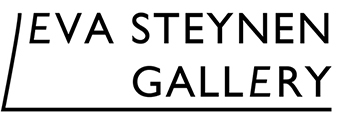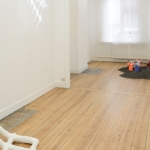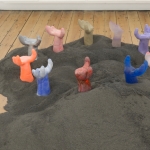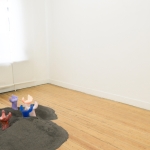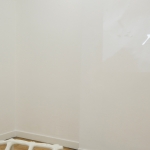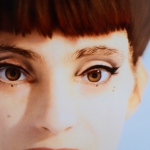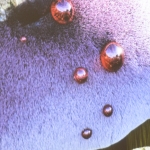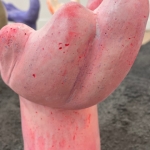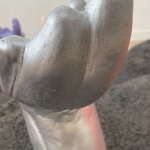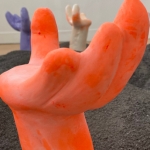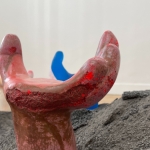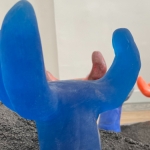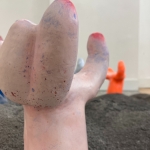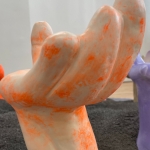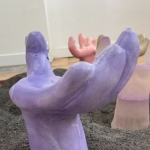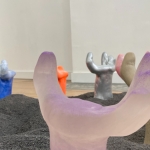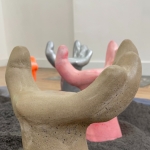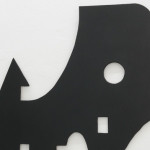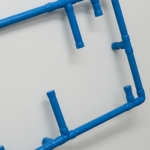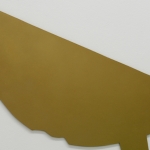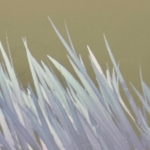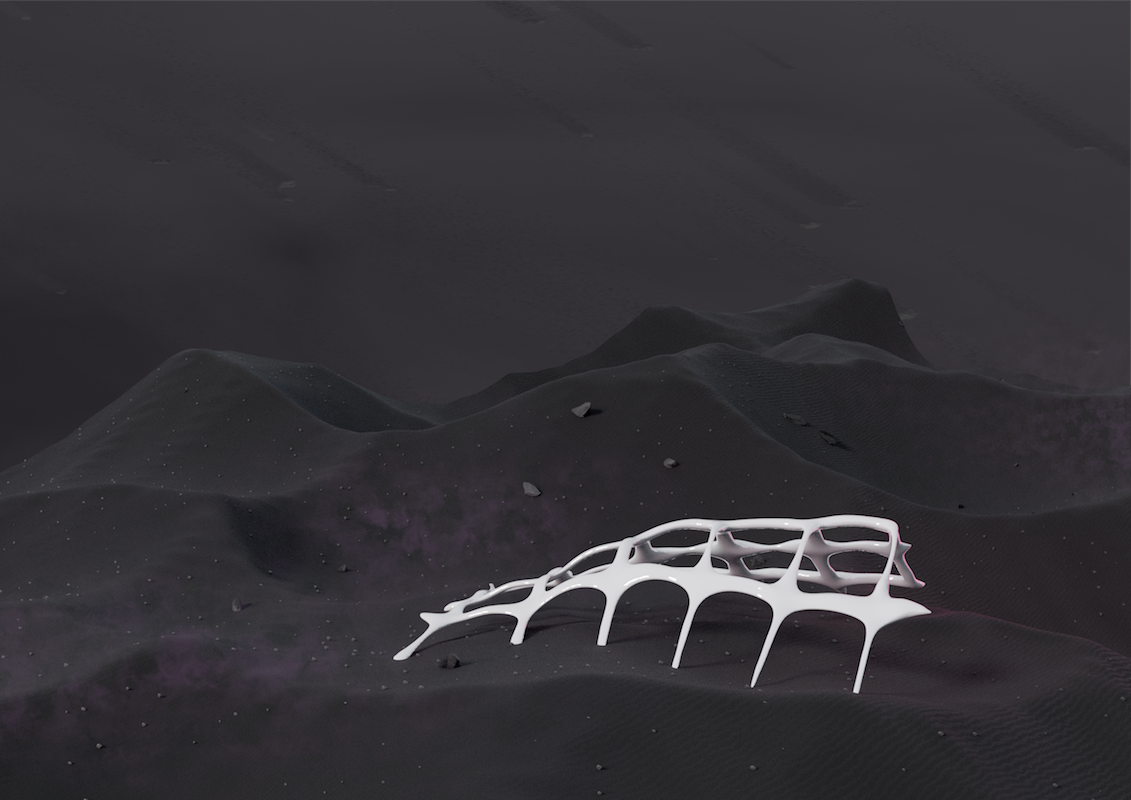
ALICE JANNE
MOTION COLLISION
10 September - 28 October 2023
The emergent practice of Alice Janne encompasses minimal sculptures, works on paper, and virtual 3D animations. Her work is often described as ‘scientific pop art’ or ‘an archaeology of the present’. At its base are the collecting and archiving of miniscule 'objets-trouvés' and little bits of paper she finds in the street. The found items are categorized in a database according to form, colour, and time, devoid of any possible narrative context. Starting from their pared-down essence in form, Janne enlarges the small objects into sculptures and acrylic on paper. She works in pigmented plaster, concrete and other materials. In the exhibition space, the sculptures and paintings on paper are distributed anew, as colourful installations.
Alice Janne poses the question of our utilitarian approach to everyday objects; the value we attribute to them, and how we neglect and forget about them. These items that were considered to have been forgotten and useless, Janne renders visible in new, poetic constellations. Her works are minimal, monochrome, and are balanced in both playfulness and colour.
In researching various manners of representation, Alice Janne also creates, alongside her installations, virtual realities of the sculptures in 3D animations. She hereby questions both the transformation from two to three dimensions, as well as the significance traditionally attributed to the arts of painting and sculpture. The questioning arises from a desire to allow the boundaries between the various artistic media to fade, and to instate an innovative interest in the contemporary duality between the real and the virtual.
The title 'Motion Collision' refers to the phenomenon of the clash between two black holes and their influence on the time-space dimension. In his theory of relativity, Albert Einstein posited that bottomless black holes swallow up all matter due to their tremendous gravitational force, but could also offer a possible way out, into a parallel universe.
In 2016, scientists succeeded, for the first time, based on gravitational waves, to make concrete measurements of a black hole. Vibrations caused by movements in space were transposed into an audio file. This made it possible for the first time to hear the clash between two enormous black holes. An event that occurred a billion and a half years ago in the present sounds like a vague, short beep. This led Stephen Hawkins to posit that black holes can emit tiny particles, and that the perception of a black hole could well be a hidden portal to a parallel world.
In 'Motion Collision' Alice Janne allows archaeology and fiction to converge. What if the miniscule objects we pass by, were particles from another universe, from another space-time continuum? The tiny objects Janne collects become artefacts from an imaginary world, bearing witness to another realm, be it virtual or real. In ‘Motion Collision’ the visitor wanders along an artistic itinerary, in which the boundaries between the real and the virtual fade, and where reality and imagination subliminally merge.
Alice Janne (°1985, B, lives and works in Brussels) graduated in 2012 from ERG art school (Brussels, BE) and holds a master’s degree in visual arts. In 2012 she received the Audience Award at the “Concours Médiatine Art Libre”. In 2014 she was selected for the “Prix de la Jeune sculpture” of the Federation Wallonia-Brussels. Her work figures in the renowned art collection of Alain Servais. She has exhibited in solo and group exhibitions in Belgium and abroad, among others, at Supermarket/Stockholm” Independent Art Fair (SE, 2013), Centrale/lab, Brussels (B, 2016), Urban Art Contest, Brussels (B, 2021), Le Delta, Namur (B, 2022), Centre Wallonie Bruxelles, Paris (FR, 2022). September 2023 Alice Janne presents her first solo exhibition at the gallery in Antwerp.
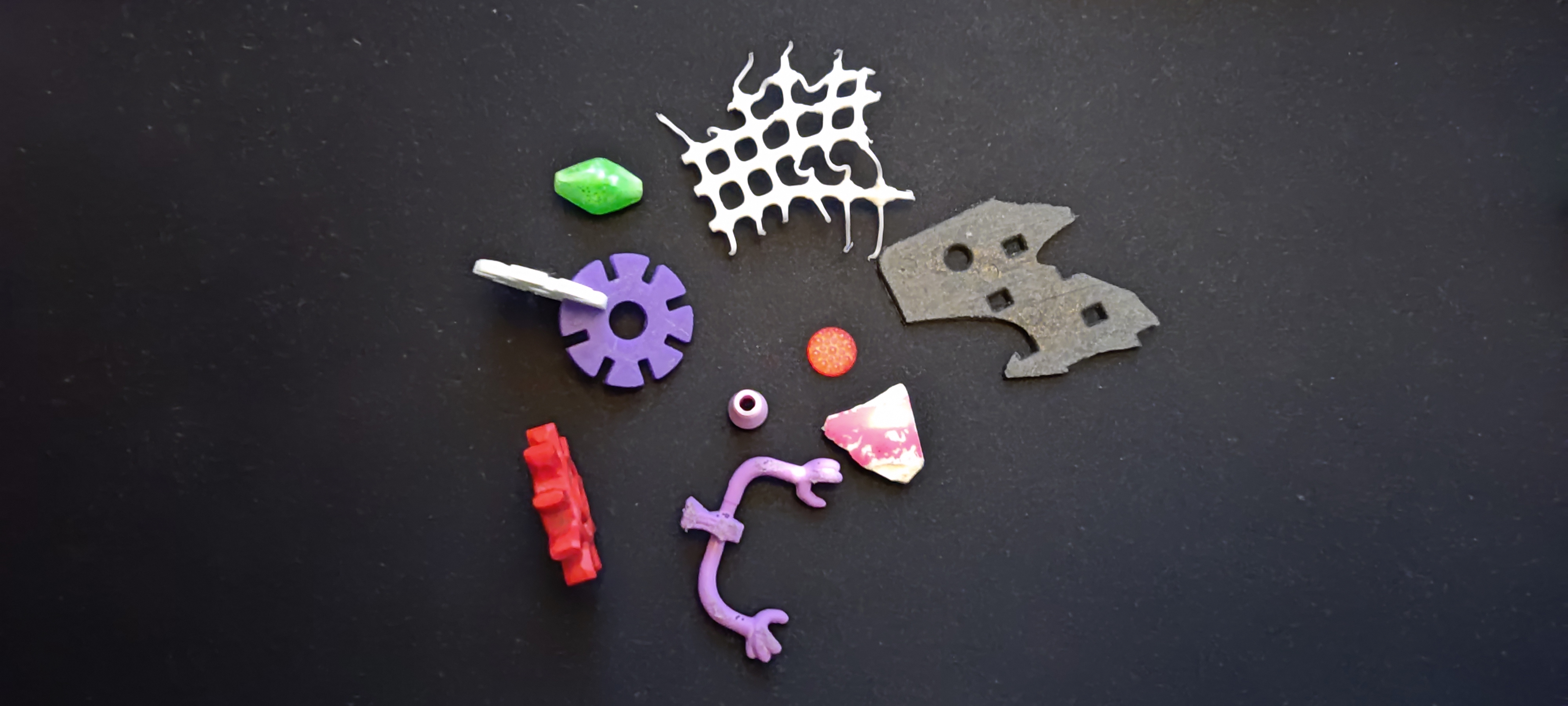
Het jonge oeuvre van Alice Janne (1985) omvat minimale sculpturen, werk op papier en virtuele 3D animaties. Haar werk wordt vaak omschreven als 'wetenschappelijke pop-art' of 'archeologie van het heden'. Aan de basis ligt het collectioneren en archiveren van minuscule 'objets-trouvés' en stukjes papier, die ze vindt op straat. De gevonden voorwerpen worden gecategoriseerd in een database op vorm, kleur en tijd en van hun mogelijke narratieve context ontdaan. Vanuit hun uitgepuurde essentie in vorm, vergroot Janne de kleine objecten uit tot sculpturen en acryl op papier. Ze hanteert in gepigmenteerd plaaster, beton of andere materialen. In de tentoonstellingsruimte worden de sculpturen en schilderijen op papier opnieuw verspreid tot nieuwe, kleurrijke installaties.
Alice Janne stelt de vraag naar onze utilitaire omgang met alledaagse dingen. De waarde die we eraan toekennen en de manier waarop we die verwaarlozen en vergeten. Wat als vergeten nutteloos werd beschouwd, maakt ze zichtbaar in nieuwe, poëtische constellaties. Haar werken zijn minimaal, monochroom en met een uitgebalanceerde variatie aan speelsheid en kleur.
In haar zoektocht naar de verschillende manieren van representeren, creëert Alice Janne, naast haar installaties ook virtuele realiteiten van de sculpturen in 3D-animaties. Hierbij stelt ze zowel de transformatie in vraag van twee- naar driedimensionaal, als de originele betekenissen van de schilder- en beeldhouwkunst. Die vraagstelling ontstaat vanuit een verlangen om de grenzen te laten vervagen tussen de verschillende artistieke media en een vernieuwende interesse te bewerkstelligen voor de hedendaagse dualiteit tussen reëel en virtueel.
De titel Motion Collision verwijst naar het fenomeen van de botsing tussen twee zwarte gaten en hun invloed op de tijd-ruimte dimensie. In zijn relativiteitstheorie opperde Einstein dat oneindige zwarte gaten door de enorme zwaartekracht alle materie opslorpen, maar ook een mogelijke uitweg kunnen hebben naar een parallel universum.
In 2016 slaagden wetenschappers er voor het eerst in, aan de hand van de zwaartekrachtgolven, concrete metingen te maken van een zwart gat. Trillingen, veroorzaakt door bewegingen in de ruimte werden omgezet in een audiobestand. Daardoor was voor het eerst mogelijk het geluid te horen van de botsing tussen twee enorme zwarte gaten. Een gebeuren dat zich voordeed anderhalf miljard jaar geleden, klinkt in het heden als een vage, korte bliep. Hierop stelde Stephen Hawkins dat zwarte gaten kunnen bestaan door kleine partikels uit te stralen. En dat de waarneming van een zwart gat weleens die verborgen poort zou kunnen vormen naar een parallelle wereld.
In Motion Collision laat Alice Janne archeologie en fictie samenkomen. Wat als de minuscule gevonden objecten, waar we aan voorbij gaan, eigenlijk partikels zijn uit een ander universum. Uit een andere tijd-ruimte. De kleine objecten die Janne verzamelt worden artefacten uit een imaginaire wereld, getuigen van het bestaan van een andere wereld, virtueel of reëel. De bezoeker wandelt door een artistieke reis, waarin de grenzen tussen reëel en virtueel vervagen, waarin werkelijkheid en verbeelding op sublieme wijze samenkomen.
